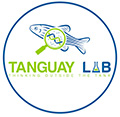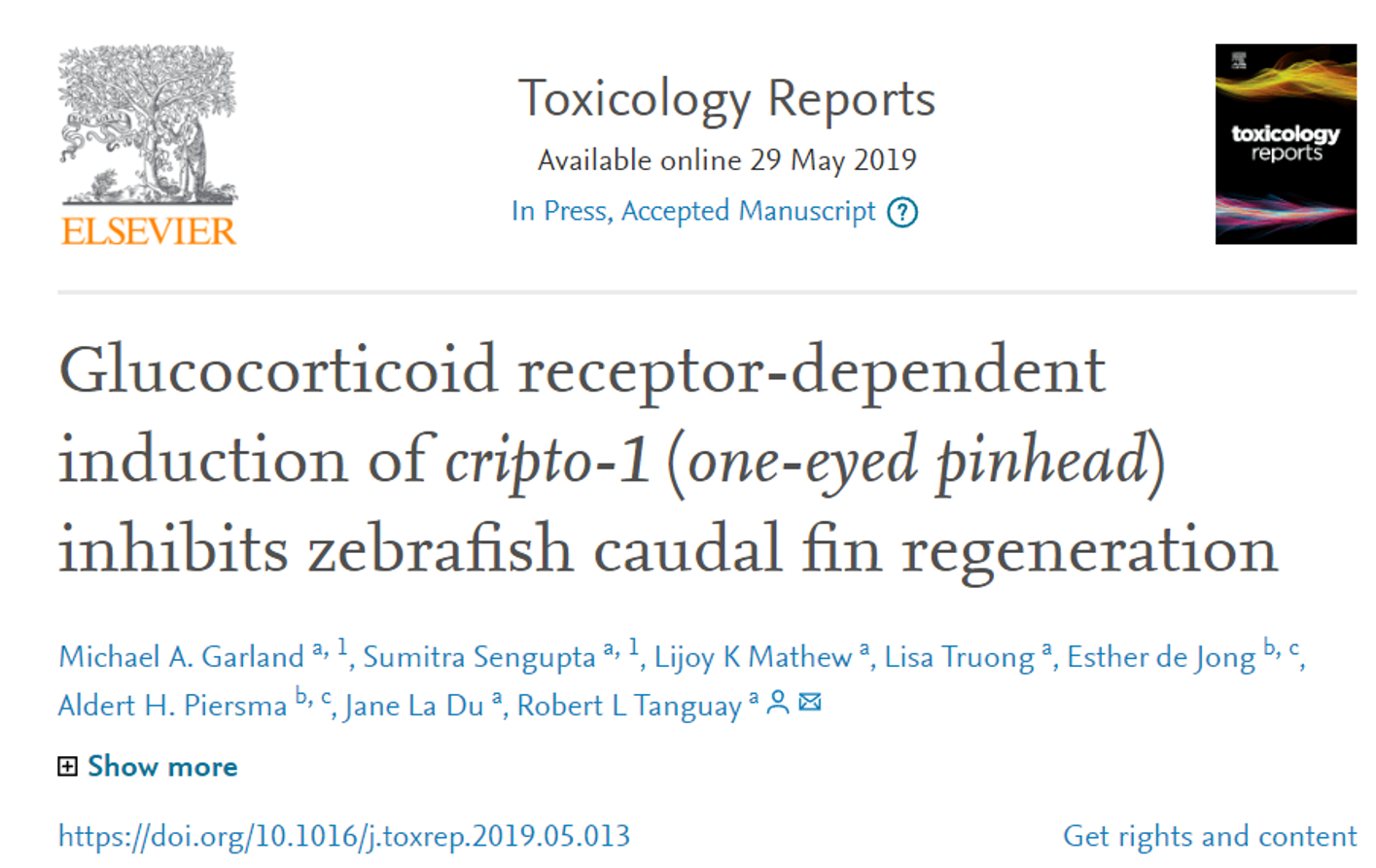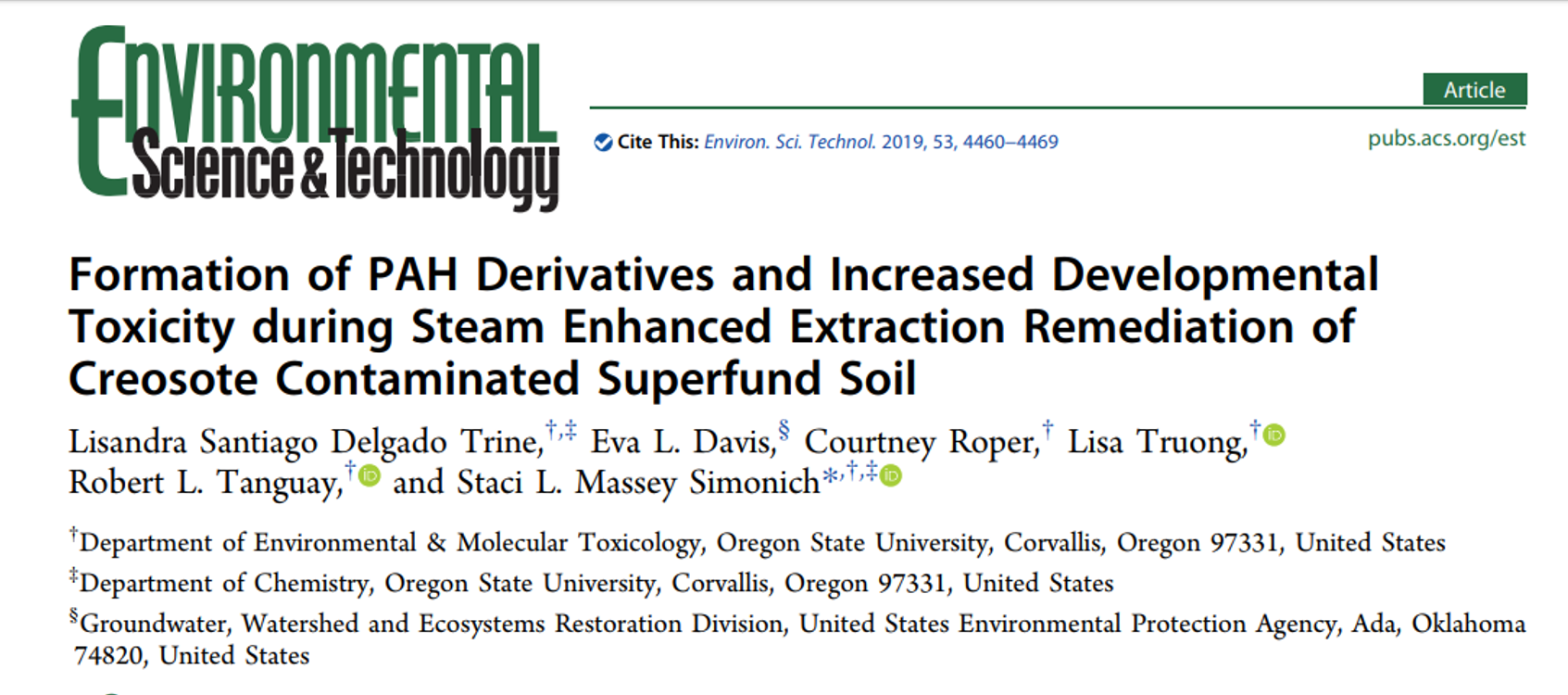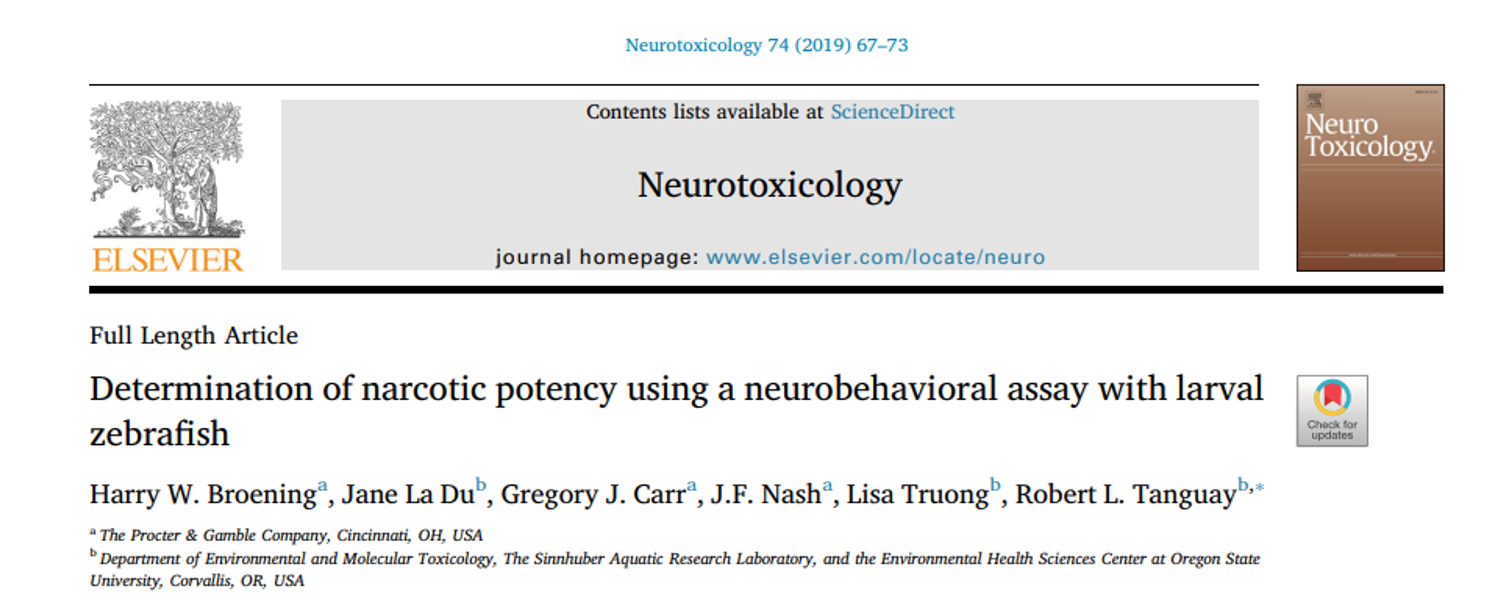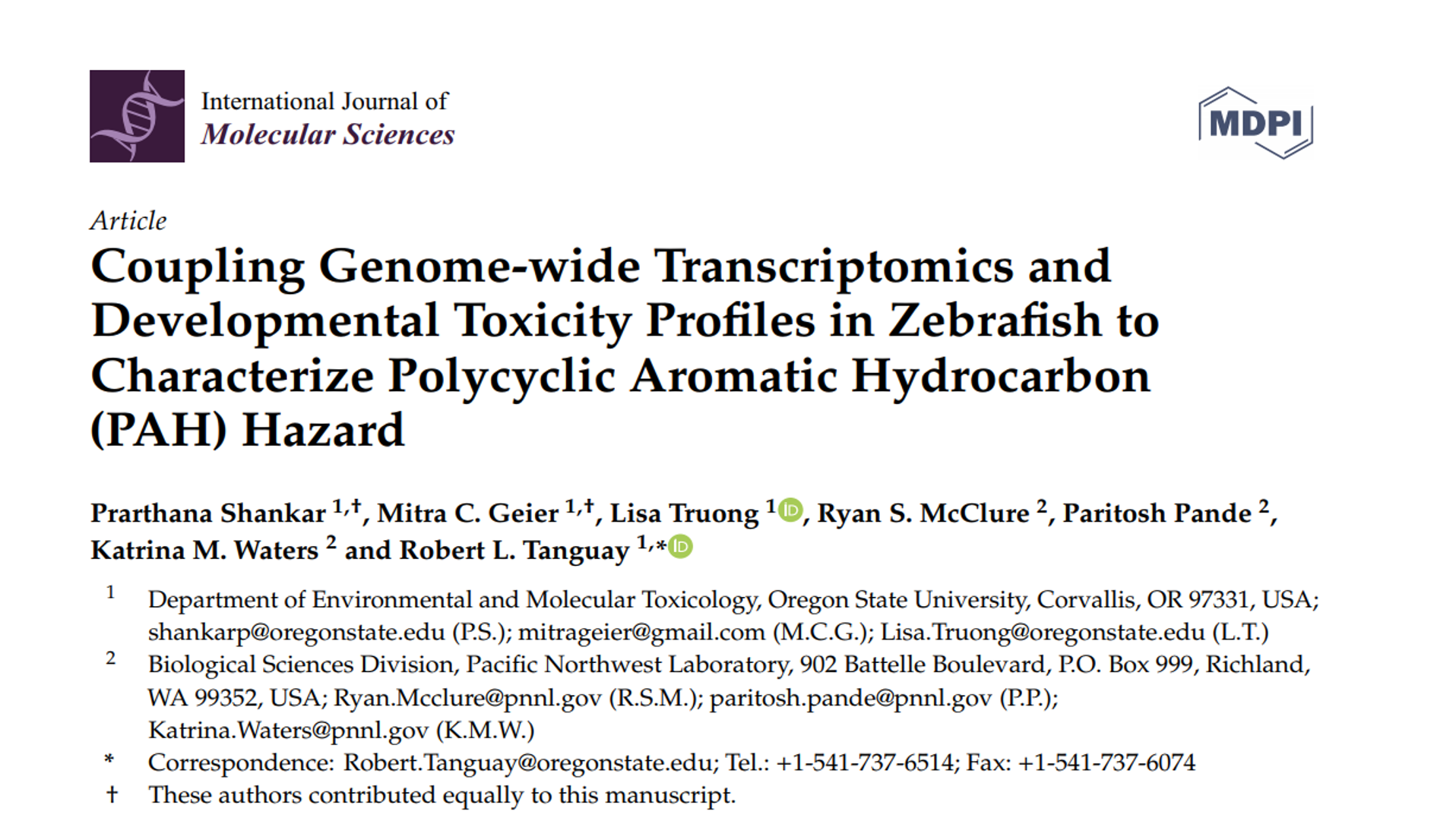Prarthana Shankar wins a poster award at Teratology Society Meeting!
NEWS
The Tanguay Lab was highlighted in the SRP ePost Notes for June 2019
In the June 2019 issue of Superfund Research Program e-Post Notes!
Excerpts:
IN THE NEWS: OSU Researchers Awarded Additional Funding by EPA
Robyn Tanguay of the Oregon State University (OSU) SRP Center was recently quoted in local news outlets about OSU’s $2 million in funding from the EPA to study the toxicity of per- and polyfluoroalkyl substances (PFAS) using zebrafish and rodents. They will be evaluating whether exposure to these chemicals potentially leads to autism, cancer, or neurodegenerative diseases. The Tanguay lab uses zebrafish to understand how exposure to complex mixtures of polycyclic aromatic hydrocarbons impact health.
HOT PUBLICATION:
Comparing Fish and Worm Models to Screen Contaminants for Neurotoxicity
According to a new study from the OSU SRP Center, combining data from zebrafish and flat worms may be useful in understanding how hazardous substances impact development and behavior.
Researchers exposed zebrafish and flat worms to 87 chemicals from five different chemical classes, including pharmaceutical drugs, flame retardants, polycyclic aromatic hydrocarbons, and pesticides. Negative effects caused by the chemicals included developmental delays, physical abnormalities, death, and altered behavior. Effects were observed in zebrafish for 86 of 87 chemicals, while worms exhibited impacts for 50 out of the 87.
Though zebrafish experienced effects from more chemicals compared to flat worms, both provided valuable information about chemical impacts during development. Studies in zebrafish revealed more information about physical abnormalities caused by chemicals, whereas flatworms demonstrated more behavioral impacts. The researchers also compared their results to 28 of the chemicals that had previously been tested with rodents. They found most chemicals that were toxic to rodents were also toxic to zebrafish and flat worms.
According to the authors, although zebrafish and flat worm models are unlikely to capture all chemicals that are hazardous to human health, they may be beneficial as a primary screening tool to prioritize chemicals for further study. Combining data from alternative model organisms, such as fish and worms, may be more cost-effective and time-efficient than carrying out chemical toxicity studies on rodents.
Welcome to the newest members of the Tanguay Lab – Yvonne Rericha and Lindsay Wilson!
Both Yvonne Rericha and Lindsay Wilson will be joining the lab this Summer 2019! They be working with PFAs and PAHs. Welcome!
Michael Garland Thesis Defense Presentation This Coming Friday, June 14th.
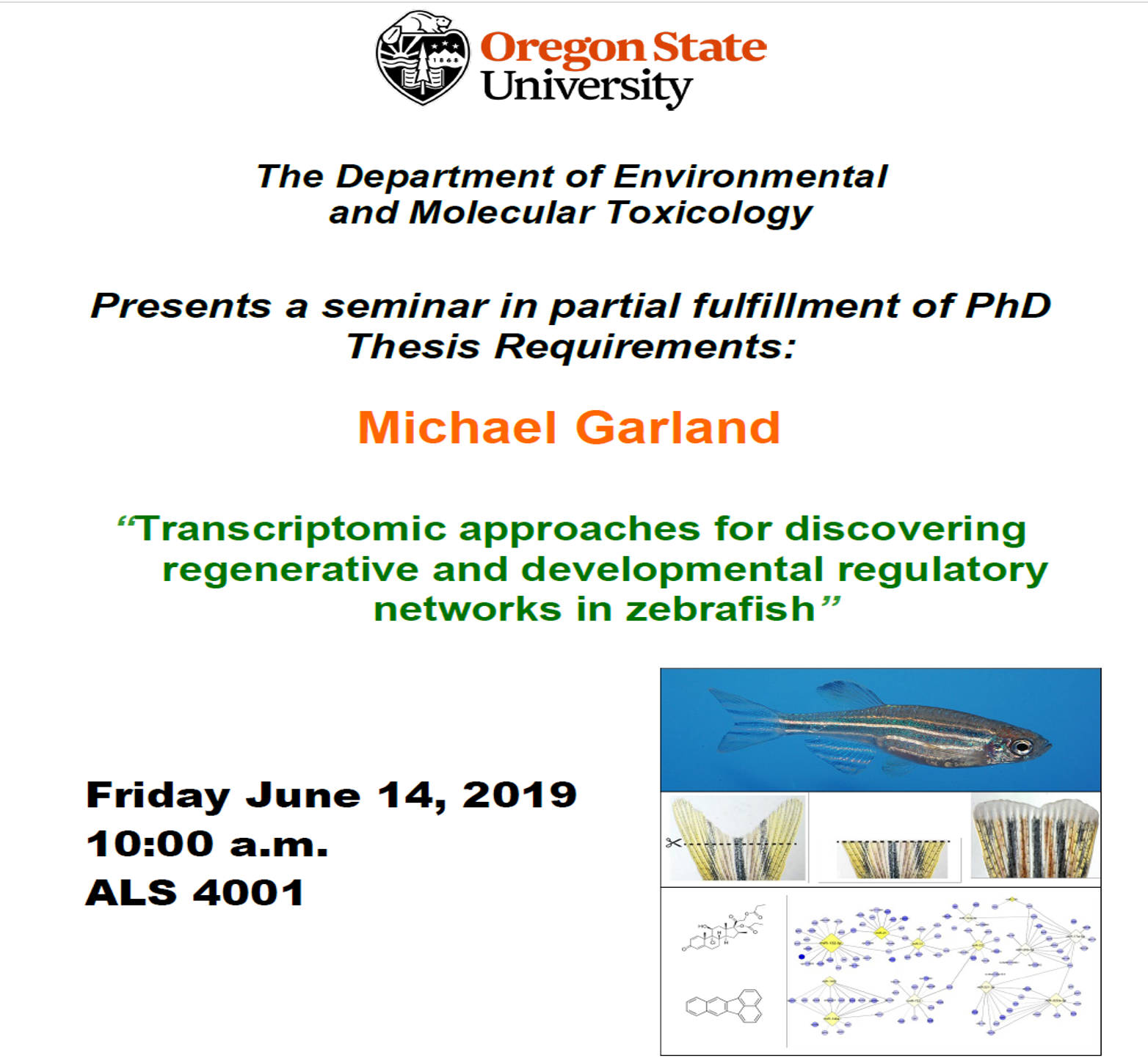
Our newest publication on caudal fin regeneration is in press!
Check out our publication with Staci Simonich lab’s in using Steam Enhanced Extraction Remediation
Our collaborative manuscript with Proctor and Gamble is now available online!
Congrats to Prarthana Shankar for authoring her first manuscript!
News report about receiving the EPA grant!
Tanguay Awarded 1.98 Million for 3 years from the US EPA to study the understanding of per- and polyfluoroalkyl substances (PFAs) in the environment
EPA Awards $3.9 Million to Research PFAS Challenges, Reducing Health Impacts
Contact Information:
WASHINGTON – Today, the U.S. Environmental Protection Agency (EPA) is awarding approximately $3.9 million through two grants for research that improves understanding of human and ecological exposure to per– and polyfluoroalkyl substances (PFAS) in the environment. This research is expected to help provide additional information about PFAS to federal, state, tribal, and local officials, as they work together to address these chemicals and protect public health. The research will also promote a greater awareness of how to restore water quality in PFAS-impacted communities.
“These grants will help fulfill a key goal in EPA’s PFAS Action Plan: strengthening science and research in order to better understand the characteristics and impacts of PFAS,” said EPA Administrator Andrew Wheeler. “This funding will also help researchers develop new strategies to further protect our communities and environment from harmful PFAS exposure.”
PFAS are a large group of synthetic chemicals that have been in use since the 1940s. PFAS are found in a wide variety of consumer and industrial products. PFAS manufacturing and processing facilities, facilities using PFAS in production of other products, airports, and military installations are some of the potential contributors to PFAS releases into the air, soil and water. Due to its widespread use and persistence in the environment, most people in the United States have been exposed to PFAS. There is evidence that continued exposure above specific levels to certain PFAS may lead to adverse health effects.
The following universities are receiving grants:
- Colorado School of Mines, Golden, Colorado, to research the fate, transport, bioaccumulation, and exposure of a diverse suite of PFAS in nationally representative PFAS impacted communities.
- Oregon State University, Corvallis, Oregon, to study the toxicity of a large collection of PFAS and PFAS mixtures with the zebrafish assay and mice studies to identify toxic PFAS that require prioritization for risk management.
These grants support ongoing Agency efforts related to PFAS—most notably, EPA’s PFAS Action Plan, which includes a long-term research approach to understanding and reducing the potential human health and environmental risks associated with PFAS.
Learn more on the grant funding at https://cfpub.epa.gov/ncer_abstracts/index.cfm/fuseaction/recipients.display/rfa_id/640/records_per_page/ALL
Learn more on PFAS at https://www.epa.gov/pfas.
